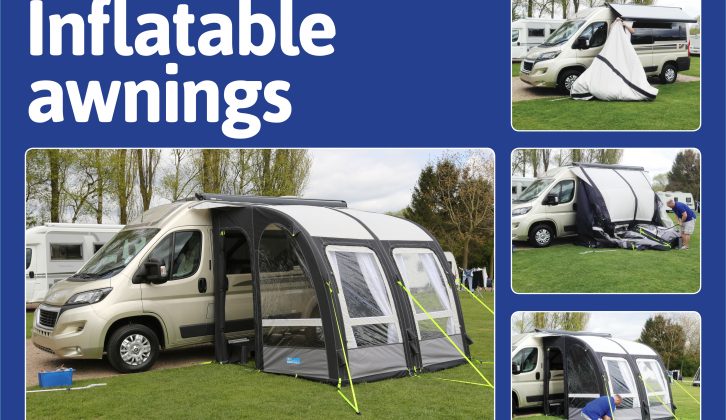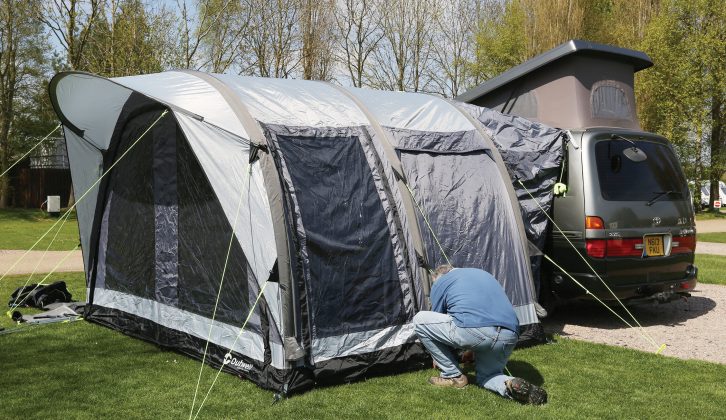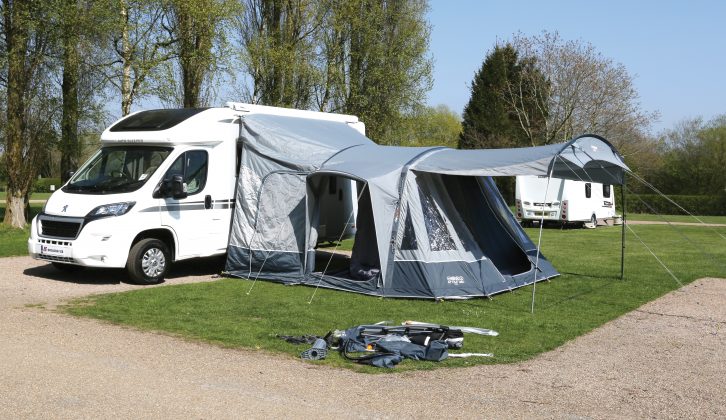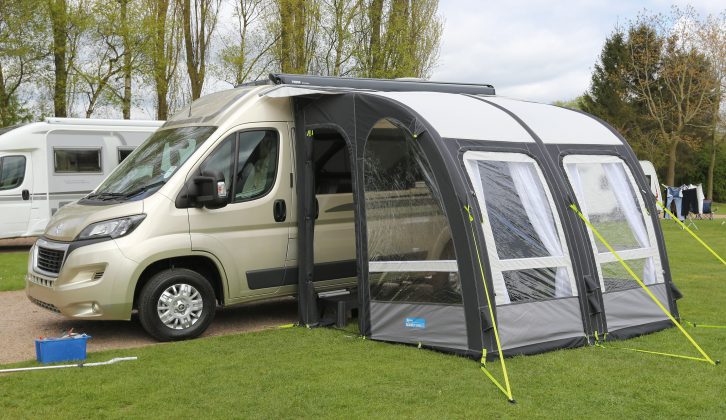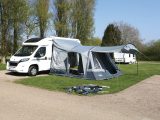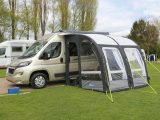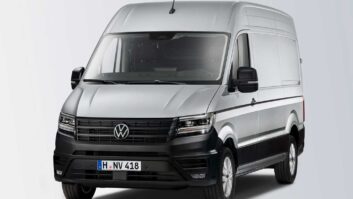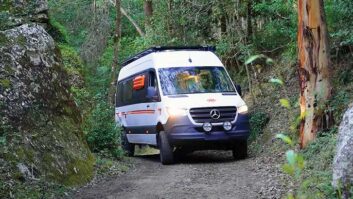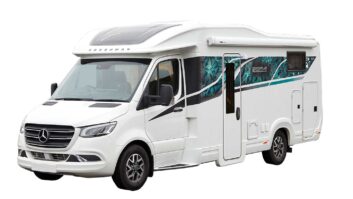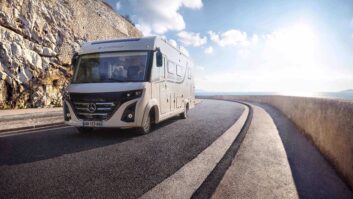Given the time it takes to put them up and pack them away, an awning may not be at the top of a motorcaravanner’s shopping list – especially for those who like to keep on the move on tour. And, let’s face it, the image of awnings has never been well served by the wag who once memorably described them as ‘a divorce in a bag’.
But that quip is starting to look more and more irrelevant. A new wave of inflatable drive-away awnings has come to market in the past few years, conferring several benefits – they’re light, pack up small, and assembly and disassembly takes a matter of minutes.
There will always be a market for drive-away awnings with poles, and wind-out canopy awnings are well established, but for those who want to maximise their relaxation time on site, an inflatable version could be the way to go.
Available for campervans, panel van conversions and coachbuilts, inflatable awnings have really come of age recently. Technology has improved, allowing prices to fall and sales increase. And drive-away adapters make the detachment and reattachment process very easy to manage, so if you want to pop to the beach, or go and explore somewhere else for a couple of days, you can leave the awning in situ.
When not attached to the ’van, your drive-away awning is a tent in its own right, and a handy place to leave touring paraphernalia behind that you may not need on day trips. Having friends to visit you on tour but you only have a two-berth? No problem. They can stay in the awning – some have discrete ‘rooms’ for sleeping and you can even add canopies and annexes. There’s really no need to fall over each other in the motorhome – take the party outside.
As with the Vango Attar 380 Tall, an inflatable drive-away awning can be attached to a canopy awning’s rail. Alternatively, they can be attached to the motorhome by guy ropes over the roof – a common solution for campervans. Then all that’s required is to inflate the awning using the supplied pump and peg it down once in position. It really is a simple process and one that’s just as easy in reverse. You’ll be back on the road in no time.
We talked to the leading manufacturers to find out how the market has grown.
It started with a tent
“When we first launched our AirBeam tents in 2011, we knew we had a successful product range on our hands,” explains Emma Robinson, brand manager for Vango. “What we didn’t expect was the instant demand for us to produce inflatable awnings as well. There would be literally hundreds of people at NEC shows asking us if we were going to launch drive-away and caravan awnings too – which now we do.
“Since then, we’ve developed and perfected the fundamental design format by producing easy-to-use valve systems and low-pressure robust double-sleeve beam systems, to improve simplicity, cost and greatly reduce pitching time.
“Growth in the market is being driven by consumer demand for quicker and easier awnings that do not threaten marriages, when being pitched on a Friday evening!”
Nigel Ainger from SunnFlair agrees. “Air technology has been around for a while but was very expensive. The full awning market definitely seems to be in regression because of the perceived high cost, so the porch market has grown. Air technology is well suited to porches – and drive-away awnings for motorhomes – because it’s a stand-alone product.
“Motorcaravanners do seem to follow the sun, which is the great thing about having a ’van, of course, and air technology helps make using an awning even easier.”
Like other companies in the awnings industry, SunnFlair is converting its most popular pole awnings into inflatable models. There is a price difference, says Nigel, but he believes this will narrow as inflatable technology matures.
“Motorhome awnings tend to be copies of what’s already in a given range. You get a proven design but with the poles replaced by inflatable tubes. As prices reduce, I expect manufacturers to get a little bolder with the overall designs.”
Clive Garrett from Outwell says that the ease of use and convenience of inflatable awnings makes them irresistible for many buyers.
“Materials and designs have been time-proven and fine-tuned in the tent market before seeping into the awning market. Potential buyers have seen how easy it is to pitch large family tents and want the same convenience, and the perception is that the inflatable awning provides that. Plus, of course, an inflatable tube will do less damage than a pole if there is an accident.”
He sees plenty of room for future innovation in a market that’s still growing.
“We could add more features to our inflatable awings but ease and convenience appears to be the priority. That being the case, then even simpler erection and packing away may be the key areas to concentrate on – besides adding choice.”
Inflatable awnings are certainly coming of age, but do you still need some persuading before taking the plunge? SunnFlair’s Nigel Ainger believes that inflatables are bringing new customers to the market.
“It’s growing from year to year. Take a potential customer who hasn’t had either type before, and show them both. They’ll go for the inflatable version every time – due to the simplicity and the speed.”
Emma Robinson from Vango agrees that the convenience of a drive-away awning is the essence of their appeal.
“Buyers appreciate the flexibility to move at a moment’s notice, knowing that the pitching and packing away is not going to take up unnecessary hours of their day. Some customers tell us that they now get their children or grandchildren to do most of the work, because it’s quite fun and simple to do.”
The growth is being driven by demand for quicker and easier awnings that do not threaten marriages when being pitched
